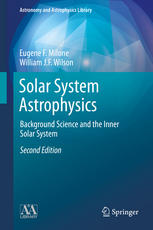

Most ebook files are in PDF format, so you can easily read them using various software such as Foxit Reader or directly on the Google Chrome browser.
Some ebook files are released by publishers in other formats such as .awz, .mobi, .epub, .fb2, etc. You may need to install specific software to read these formats on mobile/PC, such as Calibre.
Please read the tutorial at this link: https://ebookbell.com/faq
We offer FREE conversion to the popular formats you request; however, this may take some time. Therefore, right after payment, please email us, and we will try to provide the service as quickly as possible.
For some exceptional file formats or broken links (if any), please refrain from opening any disputes. Instead, email us first, and we will try to assist within a maximum of 6 hours.
EbookBell Team

4.0
6 reviewsThe second edition of Solar System Astrophysics: Background Science and the Inner Solar System provides new insights into the burgeoning field of planetary astronomy. As in the first edition, this volume begins with a rigorous treatment of coordinate frames, basic positional astronomy, and the celestial mechanics of two and restricted three body system problems. Perturbations are treated in the same way, with clear step-by-step derivations. Then the Earth's gravitational potential field and the Earth-Moon system are discussed, and the exposition turns to radiation properties with a chapter on the Sun. The exposition of the physical properties of the Moon and the terrestrial planets are greatly expanded, with much new information highlighted on the Moon, Mercury, Venus, and Mars.
All of the material is presented within a framework of historical importance. This book and its sister volume, Solar System Astrophysics: Background Science and the Inner Solar system, are pedagogically well written, providing clearly illustrated explanations, for example, of such topics as the numerical integration of the Adams-Williamson equation, the equations of state in planetary interiors and atmospheres, Maxwell’s equations as applied to planetary ionospheres and magnetospheres, and the physics and chemistry of the Habitable Zone in planetary systems.
Together, the volumes form a comprehensive text for any university course that aims to deal with all aspects of solar and extra-solar planetary systems. They will appeal separately to the intellectually curious who would like to know how just how far our knowledge of the solar system has progressed in recent years.